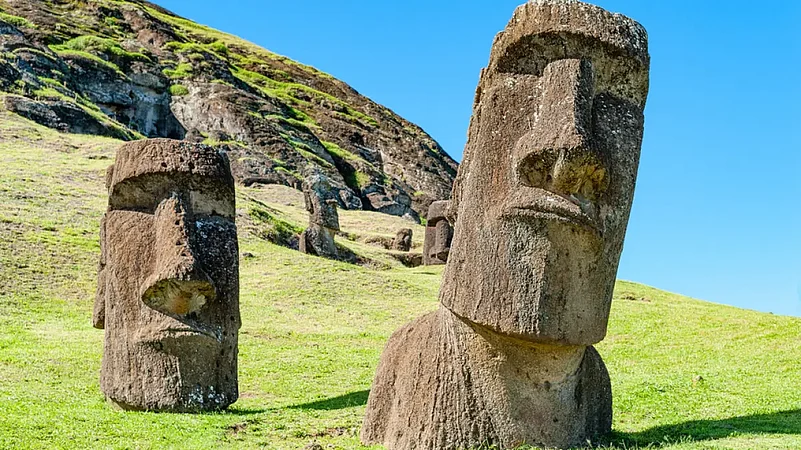Planning your next global heritage site adventure? Head to Chile’s Easter Island. Also known as Rapa Nui, this popular Pacific Ocean tourist destination is welcoming people from all over the world after a gap of two years due to the Covid-19 pandemic.
Easter Island is just 3,500 kilometres west of the coast of Chile. It is dotted with nearly 900 massive human figures or moais and it is these mysterious stone monoliths that are its well-deserved claim to fame. Like much of history, the story of the moais treads a fine line between history and mythology. It is believed that the statues were commissioned by families to venerate a deceased head of a clan. Their size and grandeur was meant to correspond with the wealth and social standing of the clan.
Advertisement
The island is famous for its moais—huge stone statues in human forms that are partially buried in the earth. These giant heads were carved centuries ago by the inhabitants of the island.
In order to enter the island, travellers must be fully vaccinated and carry a negative PCR test. The test should be done 24 hours before boarding the flight. The rule is applicable to domestic travellers. Foreign and international travellers have to take an antigen test once they arrive at Easter Island. Tourism is one of the primary sources of generating revenue here. Currently, Latam Airlines operates from Santiago to Easter Island on two days – Thursdays and Saturdays. There are plans to increase the frequency of flights.
Advertisement
Declared a heritage site by UNESCO in 1995, Easter Island is an amalgam of Polynesia and Latin America. It is one of the remotest populated islands in the world. A part of Chile, the closest inhabited land mass is the Pitcairn Islands - over 2,000 km away.




















